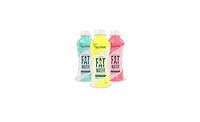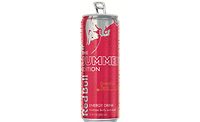In the beverage industry, trends like clean label and non-GMO are resonating with consumers. Fortified/functional (FF) beverages also have maintained their upward trajectory growing by 6 percent as health-conscious consumers seek out premium products with added vitamins and minerals, according to Chicago-based Euromonitor International’s April report “Fortified/Functional Beverages in the US.”
“Many of the best-selling fortified/functional beverages continued to stem from sports drinks and energy drinks, where products are typically fortified/functional by definition,” the report states. “… The fastest growth within fortified/functional beverages was recorded by FF non-cola carbonates and FF [ready-to-drink] RTD coffee, which experienced 17 percent and 16 percent current value growth rates, respectively.
“… The leading functional ingredients in fortified/functional beverages are vitamins C and D, along with calcium,” it continues. “Vitamin C is marketed as an antioxidant, and many consumers believe that the ingestion of vitamin C can reduce the possibility of catching a cold. Meanwhile, calcium is promoted for bone health and vitamin D is marketed as improving bone mineral density, alongside calcium.”
When it comes to new products, 2.3 percent of non-alcohol beverages launched in the 52 weeks ending Oct. 31 carried a “vitamin/mineral fortified” claim, according to Chicago-based Mintel’s Global New Products Database (GNPD). Although this is a slight increase from the 2.1 percent reported in 2015, it is a decline from 2012 when 6.1 percent of new beverages were vitamin/mineral fortified, according to GNPD data.
Currently, the most prominent vitamins used in beverages include ascorbic acid (vitamin C), thiamine (vitamin B1), riboflavin (vitamin B2), niacin (vitamin B3), D-calcium pantothenate (vitamin B5) and vitamin B12, according to Lorraine Olguin, sales manager for La Verne, Calif.-based PAT Vitamins. “Minerals, especially calcium, are inorganic elements that require larger amounts to maintain a healthy functioning body,” she adds.
Additionally, vitamin K2-MK7 has emerged as a relatively new option for beverage fortification, says Elaine Drummond, product technology manager of bioactives for Glanbia Nutritionals, Carlsbad, Calif.
“This K-group vitamin has an important role in activating key proteins that shuttle calcium deposits away from the blood vessel walls and carry it to the bones, where it can be laid down,” she explains. “As such, it has great functionality along with a calcium source in a formulation.” She adds that water-dispersible and -soluble versions of K2-MK7 are further allowing its entry into the beverage market.
A vitamin-like essential nutrient used to enhance brain and liver function, choline recently was upgraded from having an “adequate daily intake” guidance range to a full recommended daily intake (RDI), Drummond adds.
Experts note that beverage-makers are responding to trends that call for more functionality and products that promote health and wellness. Additionally, consumers want organic, non-GMO, less-processed sugar, clear or clean labels, and more natural processing using fermentation and cold-pressing.
A simpler beverage
Glanbia’s Drummond notes that clear- or clean-label products are “the leading trend of the moment.”
“This has been the case in health-and-wellness products for some time, and this has now seeped into sports performance nutrition also,” she explains. “Consumers are calling for simpler, less-processed products, and the industry is responding. This means there is a stronger call for natural forms of vitamins as opposed to synthetic.
“In addition, whole food extract sources, such as acerola cherry as a source of vitamin C, are gaining in popularity,” she continues. “The use of whole foods such as ancient grains, seeds, greens, raw and superfoods, all speak well to this consumer base.”
Dinah Diaz, senior marketing manager for delivery systems at Ingredion Inc., Westchester, Ill., echoes similar sentiments. “Consumers are interested in better-for-you beverages that satisfy their needs for refreshment and, at the same time, are delicious but will deliver some value, whether that is nutritional or sustained energy or to provide satiety,” she says. “Beverage manufacturers have to be able to provide stability of the vitamins or actives for shelf life and for consumer appeal.”
Using vitamins, minerals and antioxidants is a top trend in the beverage market with these ingredients adding functionality to carbonated soft drinks (CSDs), hot/iced tea, coffee, bottled water and non-dairy milk, according to Beverage Industry’s “Strategies to Drive Profitable Growth for Your Functional Beverage” webinar, which took place Sept. 22.
The webinar also noted the impact that taste and flavor have on beverage acceptability. Although functional ingredients like high-intensity sweeteners, proteins, vitamins and minerals, antioxidants, and botanicals can negatively impact beverage sensory acceptability, masking solutions can offset these challenges.
“Adding vitamins and minerals can negatively impact the sensory quality of beverages,” says Pam Stauffer, global marketing programs manager at Minneapolis-based Cargill. “For instance, some minerals, like iron, have metallic or chalky tastes. Treha trehalose masks the offnotes of flavor and odor from not only vitamins and minerals but also other functional ingredients including proteins and high-intensity sweeteners. In addition, Zerose erythritol, a natural, zero-calorie sweetener can provide flavor masking as well as sugar and calorie reduction.”
The webinar also noted that millennials are driving functionality, seeking products that will enhance their lifestyles, improve performance, increase energy and minimize stress.
Mark Thurston, president of AIDP Inc., City of Industry, Calif., also points to this trend. “We are seeing more fortification in beverages aimed at millennials and active lifestyles. People who understand the value of functional foods and beverages — yet are confused by the market — are the low-hanging fruit.
“Other trends we are seeing are showing the need for ever-greater fortification such as with vitamin D3 where doses as high as 4,000 [international units] IU per day are now recommended,” he continues. “Calcium, magnesium and zinc are the mainstay of minerals and [vitamin] D3 is very frequently added. AIDP’s KoAct (calcium-collagen combination), Magtein (magnesium I-threonate) are two very popular offerings.”
Yet, millennials are not the only demographic seeking products with cleaner labels, experts note. “New beverages that help consumers manage energy or provide some nutritional value continue to be a ‘sweet spot’ for the industry,” Ingredion’s Diaz says. “… Half of the population by 2019 will be more than 50 years old … accounting for more than half of all consumer product spending, based on [Information Resources Inc.] (IRI) research conducted in 2014.
“Adults ages 55-64 were the most likely to be trying to lose weight and those 65-plus were most likely to be trying to maintain weight,” she continues.
PAT Vitamins’ Olguin adds: “The demographics of beverage fortification reach well into every age range. Who would not agree that all walks of life have a need for added health benefits into beverages and foods? We see healthy nutrition benefiting the youth and continuing to reach our elders. As we look into the future of nutrition and well-being, we start to realize the importance of daily replenishment through essential vitamins and minerals fortified into beverages.”
Protecting the efficacy of vitamins & minerals
Beverage-makers continue to study and research which vitamins and minerals are essential for proper body function, development and immune support. The complexity of these ingredients and the fact that they come in a multitude of chemical forms further adds to the formulation challenges that can occur, experts note.
“An experienced food chemist will understand the workings of these and how they will behave and interact in different matrices,” Glanbia Nutritionals’ Drummond explains. “… The best way to ensure good stability and survival of micronutrients is through assessing all [of] the conditions to which the nutrients will be exposed, from bulk raw storage though processing to storage in the finished product packaging, to come up with a calculated overage level [that] will be applied to ensure that the level of micronutrient stated on the label will remain present for the entirety of the product’s shelf life.”
Among the items she cites that need careful consideration prior to final product are desired pH/RDI, clarity/appearance, final packaging and whether the vitamins are light sensitive, shelf life of product, and the process type and parameters.
Stability and taste are key attributes to consumer acceptance of functional beverages. Sensory challenges in functional beverages can be overcome with flavor/odor masking solutions, experts say.
“The biggest challenge when working with vitamins and minerals is stabilizing those ingredients in the beverage so that the drink looks appealing and masking some of the offnotes that may come from these nutraceuticals,” Ingredion’s Diaz says.
For example, when adding omega-3 fatty acids to a beverage, the oil needs to be stabilized and an emulsifier can be used to mask the offnotes and improve the taste of the beverage, she adds. A masking solution such as Ingredion’s Q-Naturale enables high oil loads and can be used to make a concentrated oil emulsion that can be dosed at lower levels to compensate and manage the taste of the beverage, Diaz explains.
“The use of proper emulsifiers and encapsulates that form a stable system is one way to protect the efficacy of vitamins and minerals in their final forms,” Diaz says.
Glanbia Nutritionals’ Drummond notes that enhanced technology for more highly stable vitamins and minerals is attracting attention to potential new health targets. “With the likes of vitamin K2-MK7 available in more soluble forms, the bone and heart health sector could see some effective products, which need not be confined to the dairy beverage sector,” she explains. “Energy also remains a strong category, although perhaps demand for natural caffeine and even stimulant-free energy is on the rise.
“Formulating micronutrients is a difficult game and one that is easy to fail given the multiple facets at play,” she continues. “Using a premix is an ideal way to overcome many of the small tangible elements that could delay new product launch or result in recalls. Dedicated formulators who work with a premix will be able to foresee the more complex issues and work to prevent them from the ground up.” BI






